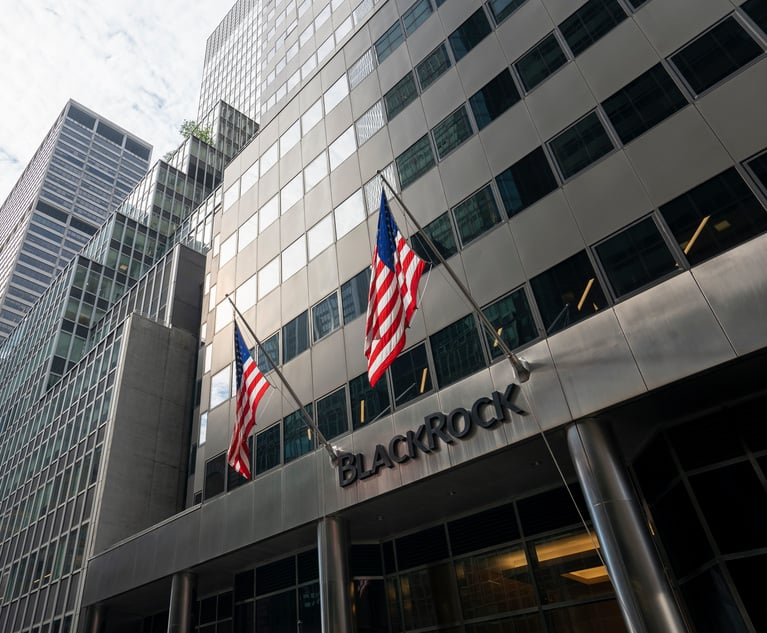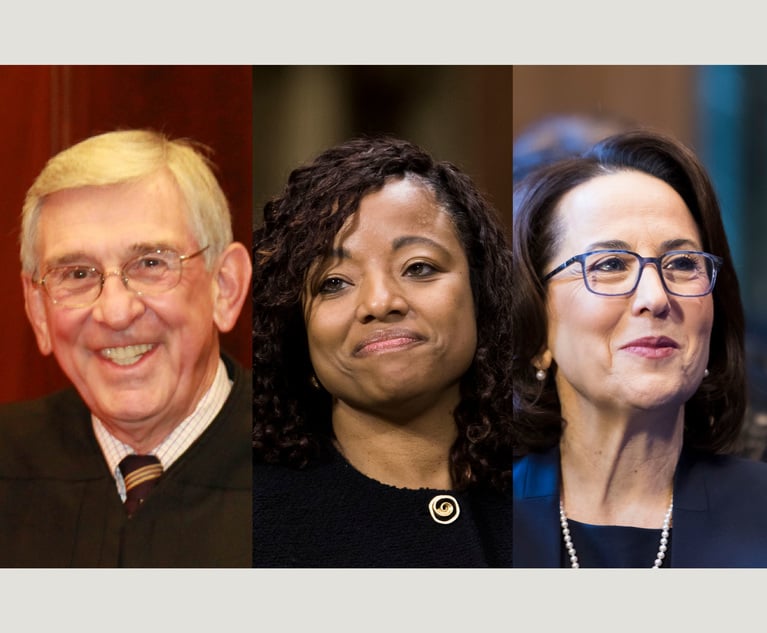Cooley Saves Patents on Night Vision Goggles From US Challenge
The law firm pulled off a patent coup for its defense contractor client in the U.S. Court of Federal Claims.
January 22, 2018 at 09:30 AM
3 minute read
Cooley has pulled off a patent coup on behalf of defense contractor Science Applications International Corp. (SAIC)
The law firm defeated a Section 101 patent eligibility motion on Friday, beating the U.S. government in the process.
The feds argued that SAIC is trying to monopolize a broad range of techniques for improving heads-up displays on night vision goggles. Cooley says the technology, pioneered by a retired brigadier general, is saving lives on the battlefield and that SAIC deserves to be compensated for it.
Judge Eric Bruggink of the Court of Federal Claims sided with Cooley. “The Federal Circuit has admonished that, just because the claims involve an abstract idea does not mean that they are directed to an abstract idea,” Bruggink wrote in Science Applications International v. United States.
Cooley partner DeAnna Allen argued the motion earlier this month. Partners Christopher Campbell and Doublas Lobel were also part of Cooley's team.
➤➤ Get IP news and commentary straight to your in-box with Skilled in the Art by Scott Graham. Learn more and sign up here.
The four patents, primarily the 7,787,012 and the 9,229,230, describe systems and methods of integrating the fields of view from a night vision component and a weapon sight, so that soldiers can fire accurately without having to raise their goggles and reacquire the target through the weapon scope.
SAIC alleges it held private demonstrations with the Army between 2005 and 2007 and confidentially collaborated with two suppliers of thermal weapon sights, BAE Systems and DRS Technologies Inc. Now BAE and DRS are providing the government with goggle systems without paying SAIC, the company claims.
The government argued that SAIC's patents broadly claim “the idea of superimposing a video image in a location on a display.” The patents themselves state that the technology can be used “in a myriad of settings” ranging from law enforcement to surgery to astronomy, the government points out. “The claims lack the necessary specificity to avoid the pre-emption concerns that underlie the abstract idea exception to patentability,” the government argued.
But Bruggink agreed with Cooley that the claims don't stop at the superimposing of images. Rather, they “combine existing computer technology, sensors, and calculations in an unconventional way” to achieve more accurate images. That is not an abstract idea, the judge concluded.
Cooley and Bruggink relied in large measure on another Court of Federal Claims decision that went against the government, Thales Visionix v. United States. That decision, affirmed last year by the Federal Circuit, also involved heads-up displays, only these were mounted in fighter jet pilot helmets.
“The Federal Circuit in ThalesVisionix relied on the principle that known techniques or components may be included in a claim when used in an unconventional way to acquire a new and useful result,” Bruggink wrote.
This content has been archived. It is available through our partners, LexisNexis® and Bloomberg Law.
To view this content, please continue to their sites.
Not a Lexis Subscriber?
Subscribe Now
Not a Bloomberg Law Subscriber?
Subscribe Now
NOT FOR REPRINT
© 2025 ALM Global, LLC, All Rights Reserved. Request academic re-use from www.copyright.com. All other uses, submit a request to [email protected]. For more information visit Asset & Logo Licensing.
You Might Like
View All
US Courts Announce Closures in Observance of Jimmy Carter National Mourning Day
2 minute read
Who Got the Work: Gibson Dunn and Wilmer to Defend BlackRock in ESG Antitrust Lawsuit
2 minute read
New York Times Moves for $100K in Attorney Fees Against Dfinity Foundation
3 minute read
Split 4th Circuit Revives Constitutional Challenge to Child Vaccine Mandate
Trending Stories
Who Got The Work
Michael G. Bongiorno, Andrew Scott Dulberg and Elizabeth E. Driscoll from Wilmer Cutler Pickering Hale and Dorr have stepped in to represent Symbotic Inc., an A.I.-enabled technology platform that focuses on increasing supply chain efficiency, and other defendants in a pending shareholder derivative lawsuit. The case, filed Oct. 2 in Massachusetts District Court by the Brown Law Firm on behalf of Stephen Austen, accuses certain officers and directors of misleading investors in regard to Symbotic's potential for margin growth by failing to disclose that the company was not equipped to timely deploy its systems or manage expenses through project delays. The case, assigned to U.S. District Judge Nathaniel M. Gorton, is 1:24-cv-12522, Austen v. Cohen et al.
Who Got The Work
Edmund Polubinski and Marie Killmond of Davis Polk & Wardwell have entered appearances for data platform software development company MongoDB and other defendants in a pending shareholder derivative lawsuit. The action, filed Oct. 7 in New York Southern District Court by the Brown Law Firm, accuses the company's directors and/or officers of falsely expressing confidence in the company’s restructuring of its sales incentive plan and downplaying the severity of decreases in its upfront commitments. The case is 1:24-cv-07594, Roy v. Ittycheria et al.
Who Got The Work
Amy O. Bruchs and Kurt F. Ellison of Michael Best & Friedrich have entered appearances for Epic Systems Corp. in a pending employment discrimination lawsuit. The suit was filed Sept. 7 in Wisconsin Western District Court by Levine Eisberner LLC and Siri & Glimstad on behalf of a project manager who claims that he was wrongfully terminated after applying for a religious exemption to the defendant's COVID-19 vaccine mandate. The case, assigned to U.S. Magistrate Judge Anita Marie Boor, is 3:24-cv-00630, Secker, Nathan v. Epic Systems Corporation.
Who Got The Work
David X. Sullivan, Thomas J. Finn and Gregory A. Hall from McCarter & English have entered appearances for Sunrun Installation Services in a pending civil rights lawsuit. The complaint was filed Sept. 4 in Connecticut District Court by attorney Robert M. Berke on behalf of former employee George Edward Steins, who was arrested and charged with employing an unregistered home improvement salesperson. The complaint alleges that had Sunrun informed the Connecticut Department of Consumer Protection that the plaintiff's employment had ended in 2017 and that he no longer held Sunrun's home improvement contractor license, he would not have been hit with charges, which were dismissed in May 2024. The case, assigned to U.S. District Judge Jeffrey A. Meyer, is 3:24-cv-01423, Steins v. Sunrun, Inc. et al.
Who Got The Work
Greenberg Traurig shareholder Joshua L. Raskin has entered an appearance for boohoo.com UK Ltd. in a pending patent infringement lawsuit. The suit, filed Sept. 3 in Texas Eastern District Court by Rozier Hardt McDonough on behalf of Alto Dynamics, asserts five patents related to an online shopping platform. The case, assigned to U.S. District Judge Rodney Gilstrap, is 2:24-cv-00719, Alto Dynamics, LLC v. boohoo.com UK Limited.
Featured Firms
Law Offices of Gary Martin Hays & Associates, P.C.
(470) 294-1674
Law Offices of Mark E. Salomone
(857) 444-6468
Smith & Hassler
(713) 739-1250











